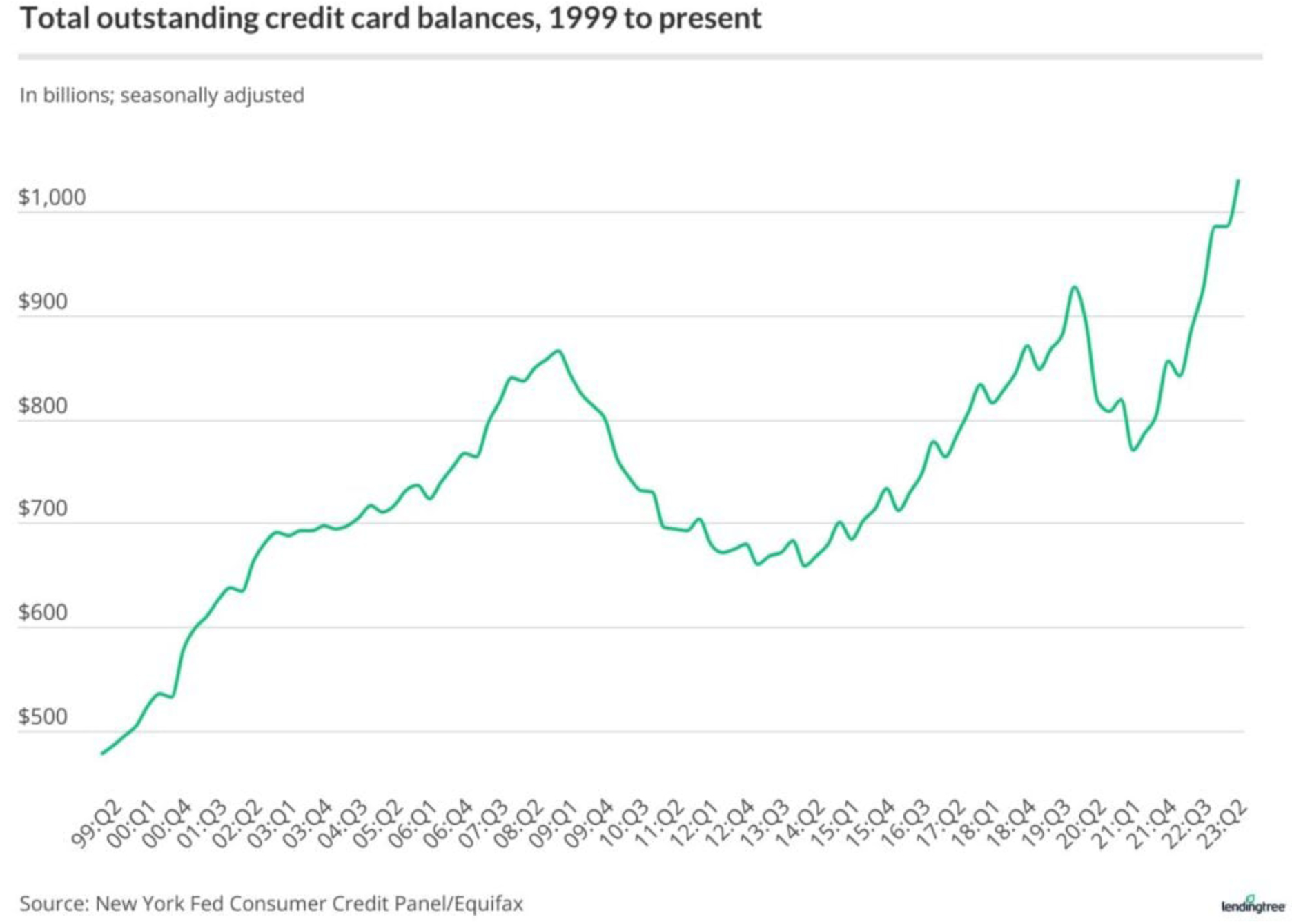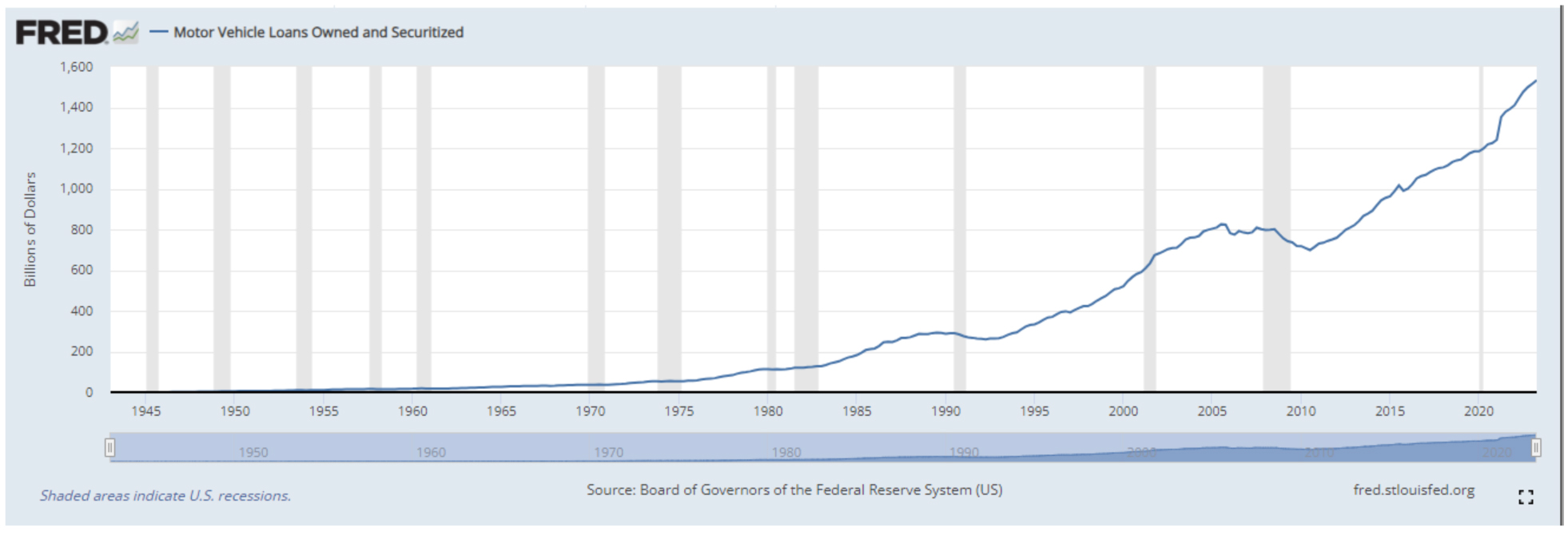by Bryan Perry
September 19, 2023
Not much has changed in the past month to convince the markets that the Fed is completely done raising rates. Last week’s inflation and retail sales data, chip-sector theatrics, and a host of industry conferences did little to change that. All it did was raise the level of hand wringing before the Fed meeting this week.
About now, it would be nice to focus on end-of-quarter window dressing, fourth-quarter seasonality, a near-certain Fed pause on a rate hike, and what should be a pretty bullish third-quarter earnings season, but the market landscape bears some elements of caution for the very near term. Namely, bond yields are grinding higher, as Treasury auctions are seeing lower demand, oil prices are trading above $90 per barrel, the United Auto Workers strike reveals wide divisions among union leaders and management, the former and current U.S. Presidents are snarled in political investigations, the ECB is raising rates, and Congress appears to be on track to trigger a government shutdown on October 1, 2023, since it is not expected to pass the 12 appropriations bills that fund government operations before the start of the new fiscal year.

Graphs are for illustrative and discussion purposes only. Please read important disclosures at the end of this commentary.
So, should anyone be surprised that traders and investors hit the revolving doors in last Friday’s session? There’s also a lack of trust in American leadership. To say that America has large numbers of unqualified people in high places is a major understatement. For starters, the high-profile diplomatic trip to China by Secretary of Commerce Gina Riamondo and Treasury Secretary Janet Yellen, resulted in nothing of value.
On the home front, Congress faces yet another budget deadline by October 1, and once again there seems to be no regard for fiscal responsibility in Washington. The federal debt is spiraling higher, with the latest Treasury auctions being met with softer demand, implying that real rates will need to be high enough to attract buyers of U.S. debt, which currently stands at $32.6 trillion, the equivalent of almost $100,000 per U.S. citizen. Politicians have turned a blind eye, as if to ignore any bond market revolution, and that doesn’t even get into the oil markets, where the U.S. has little, if any, leverage in bringing prices down.
To be frank, I’m surprised that much of the time the market trades as well as it does, considering the incredible vacuum of integrity and leadership that exists on both sides of the U.S. aisle, as well as at the leadership pinnacle of the world’s most important foreign powers. Additionally, there is little mention of how Americans are piling on personal debt at a meteoric pace. While bankers and the financial media claim that U.S. household balance sheets are healthy, the hard data would argue otherwise.

Graphs are for illustrative and discussion purposes only. Please read important disclosures at the end of this commentary.
Outstanding auto loans in the U.S. are nearing $1.6 trillion, up 14-fold from 1980 and reaching an obscene number, considering that we’re talking about a rapidly depreciating asset. I suppose this number can be visualized by a costly new car. For example, the base price of some 2023 pickups is over $70,000. Car loans now extend out to 96 months (eight years). A 96-month loan with a 5% interest rate and 10% down ($7,000) commands a monthly payment over $1000 and so, buy my calculations, this will end up costing over $100,000. I think this borders on insanity, but I don’t make the rules, and it’s a free country. It also helps explain this red-flag type of chart.

Graphs are for illustrative and discussion purposes only. Please read important disclosures at the end of this commentary.
On the plus side, according to Investopedia, “Home equity in the United States is at an all-time record high, with the average mortgage holder now owning $185,000 in accessible home equity. That figure increased by 35% in 2021, fueled by a similarly rapid increase in house valuations. This is the fastest rate at which average U.S. home equity has ever grown—more than twice the rate of 2020, the previous high.” Clearly, the spike in home appreciation created an opportunity to tap home equity, but it does not resolve the personal, auto and student loan credit bubbles serviced with interest rates at 15-year highs.
Still, the largest form of consumer debt in the U.S. is mortgage debt at $12.04 trillion in the first quarter of 2023. Student debt is the second largest form of consumer debt at $1.77 trillion, followed by auto debt and credit card debt, noted above. The student loan repayment pause was stopped on June 30, 2023.
No wonder there’s a labor movement arising in multiple industries. Americans have some big bills to pay.
All content above represents the opinion of Bryan Perry of Navellier & Associates, Inc.
Also In This Issue
A Look Ahead by Louis Navellier
Inflation is Rapidly Receding – Except for Energy Prices
Income Mail by Bryan Perry
America Desperately Needs Lower Rates to Pay its Rising Bills
Growth Mail by Gary Alexander
Rising Debt, Fewer Workers and Slower Growth Since 2001 – Why?
Global Mail by Ivan Martchev
Bonds and the Dollar Suggest a Further Correction in Equities
Sector Spotlight by Jason Bodner
The Market Often Surges or Sinks on Misinterpreted Words
View Full Archive
Read Past Issues Here

Bryan Perry
SENIOR DIRECTOR
Bryan Perry is a Senior Director with Navellier Private Client Group, advising and facilitating high net worth investors in the pursuit of their financial goals.
Bryan’s financial services career spanning the past three decades includes over 20 years of wealth management experience with Wall Street firms that include Bear Stearns, Lehman Brothers and Paine Webber, working with both retail and institutional clients. Bryan earned a B.A. in Political Science from Virginia Polytechnic Institute & State University and currently holds a Series 65 license. All content of “Income Mail” represents the opinion of Bryan Perry
Important Disclosures:
Although information in these reports has been obtained from and is based upon sources that Navellier believes to be reliable, Navellier does not guarantee its accuracy and it may be incomplete or condensed. All opinions and estimates constitute Navellier’s judgment as of the date the report was created and are subject to change without notice. These reports are for informational purposes only and are not a solicitation for the purchase or sale of a security. Any decision to purchase securities mentioned in these reports must take into account existing public information on such securities or any registered prospectus.To the extent permitted by law, neither Navellier & Associates, Inc., nor any of its affiliates, agents, or service providers assumes any liability or responsibility nor owes any duty of care for any consequences of any person acting or refraining to act in reliance on the information contained in this communication or for any decision based on it.
Past performance is no indication of future results. Investment in securities involves significant risk and has the potential for partial or complete loss of funds invested. It should not be assumed that any securities recommendations made by Navellier. in the future will be profitable or equal the performance of securities made in this report. Dividend payments are not guaranteed. The amount of a dividend payment, if any, can vary over time and issuers may reduce dividends paid on securities in the event of a recession or adverse event affecting a specific industry or issuer.
None of the stock information, data, and company information presented herein constitutes a recommendation by Navellier or a solicitation to buy or sell any securities. Any specific securities identified and described do not represent all of the securities purchased, sold, or recommended for advisory clients. The holdings identified do not represent all of the securities purchased, sold, or recommended for advisory clients and the reader should not assume that investments in the securities identified and discussed were or will be profitable.
Information presented is general information that does not take into account your individual circumstances, financial situation, or needs, nor does it present a personalized recommendation to you. Individual stocks presented may not be suitable for every investor. Investment in securities involves significant risk and has the potential for partial or complete loss of funds invested. Investment in fixed income securities has the potential for the investment return and principal value of an investment to fluctuate so that an investor’s holdings, when redeemed, may be worth less than their original cost.
One cannot invest directly in an index. Index is unmanaged and index performance does not reflect deduction of fees, expenses, or taxes. Presentation of Index data does not reflect a belief by Navellier that any stock index constitutes an investment alternative to any Navellier equity strategy or is necessarily comparable to such strategies. Among the most important differences between the Indices and Navellier strategies are that the Navellier equity strategies may (1) incur material management fees, (2) concentrate its investments in relatively few stocks, industries, or sectors, (3) have significantly greater trading activity and related costs, and (4) be significantly more or less volatile than the Indices.
ETF Risk: We may invest in exchange traded funds (“ETFs”) and some of our investment strategies are generally fully invested in ETFs. Like traditional mutual funds, ETFs charge asset-based fees, but they generally do not charge initial sales charges or redemption fees and investors typically pay only customary brokerage fees to buy and sell ETF shares. The fees and costs charged by ETFs held in client accounts will not be deducted from the compensation the client pays Navellier. ETF prices can fluctuate up or down, and a client account could lose money investing in an ETF if the prices of the securities owned by the ETF go down. ETFs are subject to additional risks:
- ETF shares may trade above or below their net asset value;
- An active trading market for an ETF’s shares may not develop or be maintained;
- The value of an ETF may be more volatile than the underlying portfolio of securities the ETF is designed to track;
- The cost of owning shares of the ETF may exceed those a client would incur by directly investing in the underlying securities; and
- Trading of an ETF’s shares may be halted if the listing exchange’s officials deem it appropriate, the shares are delisted from the exchange, or the activation of market-wide “circuit breakers” (which are tied to large decreases in stock prices) halts stock trading generally.
Grader Disclosures: Investment in equity strategies involves substantial risk and has the potential for partial or complete loss of funds invested. The sample portfolio and any accompanying charts are for informational purposes only and are not to be construed as a solicitation to buy or sell any financial instrument and should not be relied upon as the sole factor in an investment making decision. As a matter of normal and important disclosures to you, as a potential investor, please consider the following: The performance presented is not based on any actual securities trading, portfolio, or accounts, and the reported performance of the A, B, C, D, and F portfolios (collectively the “model portfolios”) should be considered mere “paper” or pro forma performance results based on Navellier’s research.
Investors evaluating any of Navellier & Associates, Inc.’s, (or its affiliates’) Investment Products must not use any information presented here, including the performance figures of the model portfolios, in their evaluation of any Navellier Investment Products. Navellier Investment Products include the firm’s mutual funds and managed accounts. The model portfolios, charts, and other information presented do not represent actual funded trades and are not actual funded portfolios. There are material differences between Navellier Investment Products’ portfolios and the model portfolios, research, and performance figures presented here. The model portfolios and the research results (1) may contain stocks or ETFs that are illiquid and difficult to trade; (2) may contain stock or ETF holdings materially different from actual funded Navellier Investment Product portfolios; (3) include the reinvestment of all dividends and other earnings, estimated trading costs, commissions, or management fees; and, (4) may not reflect prices obtained in an actual funded Navellier Investment Product portfolio. For these and other reasons, the reported performances of model portfolios do not reflect the performance results of Navellier’s actually funded and traded Investment Products. In most cases, Navellier’s Investment Products have materially lower performance results than the performances of the model portfolios presented.
This report contains statements that are, or may be considered to be, forward-looking statements. All statements that are not historical facts, including statements about our beliefs or expectations, are “forward-looking statements” within the meaning of The U.S. Private Securities Litigation Reform Act of 1995. These statements may be identified by such forward-looking terminology as “expect,” “estimate,” “plan,” “intend,” “believe,” “anticipate,” “may,” “will,” “should,” “could,” “continue,” “project,” or similar statements or variations of such terms. Our forward-looking statements are based on a series of expectations, assumptions, and projections, are not guarantees of future results or performance, and involve substantial risks and uncertainty as described in Form ADV Part 2A of our filing with the Securities and Exchange Commission (SEC), which is available at www.adviserinfo.sec.gov or by requesting a copy by emailing info@navellier.com. All of our forward-looking statements are as of the date of this report only. We can give no assurance that such expectations or forward-looking statements will prove to be correct. Actual results may differ materially. You are urged to carefully consider all such factors.
FEDERAL TAX ADVICE DISCLAIMER: As required by U.S. Treasury Regulations, you are informed that, to the extent this presentation includes any federal tax advice, the presentation is not written by Navellier to be used, and cannot be used, for the purpose of avoiding federal tax penalties. Navellier does not advise on any income tax requirements or issues. Use of any information presented by Navellier is for general information only and does not represent tax advice either express or implied. You are encouraged to seek professional tax advice for income tax questions and assistance.
IMPORTANT NEWSLETTER DISCLOSURE:The hypothetical performance results for investment newsletters that are authored or edited by Louis Navellier, including Louis Navellier’s Growth Investor, Louis Navellier’s Breakthrough Stocks, Louis Navellier’s Accelerated Profits, and Louis Navellier’s Platinum Club, are not based on any actual securities trading, portfolio, or accounts, and the newsletters’ reported hypothetical performances should be considered mere “paper” or proforma hypothetical performance results and are not actual performance of real world trades. Navellier & Associates, Inc. does not have any relation to or affiliation with the owner of these newsletters. There are material differences between Navellier Investment Products’ portfolios and the InvestorPlace Media, LLC newsletter portfolios authored by Louis Navellier. The InvestorPlace Media, LLC newsletters contain hypothetical performance that do not include transaction costs, advisory fees, or other fees a client might incur if actual investments and trades were being made by an investor. As a result, newsletter performance should not be used to evaluate Navellier Investment services which are separate and different from the newsletters. The owner of the newsletters is InvestorPlace Media, LLC and any questions concerning the newsletters, including any newsletter advertising or hypothetical Newsletter performance claims, (which are calculated solely by Investor Place Media and not Navellier) should be referred to InvestorPlace Media, LLC at (800) 718-8289.
Please note that Navellier & Associates and the Navellier Private Client Group are managed completely independent of the newsletters owned and published by InvestorPlace Media, LLC and written and edited by Louis Navellier, and investment performance of the newsletters should in no way be considered indicative of potential future investment performance for any Navellier & Associates separately managed account portfolio. Potential investors should consult with their financial advisor before investing in any Navellier Investment Product.
Navellier claims compliance with Global Investment Performance Standards (GIPS). To receive a complete list and descriptions of Navellier’s composites and/or a presentation that adheres to the GIPS standards, please contact Navellier or click here. It should not be assumed that any securities recommendations made by Navellier & Associates, Inc. in the future will be profitable or equal the performance of securities made in this report.
FactSet Disclosure: Navellier does not independently calculate the statistical information included in the attached report. The calculation and the information are provided by FactSet, a company not related to Navellier. Although information contained in the report has been obtained from FactSet and is based on sources Navellier believes to be reliable, Navellier does not guarantee its accuracy, and it may be incomplete or condensed. The report and the related FactSet sourced information are provided on an “as is” basis. The user assumes the entire risk of any use made of this information. Investors should consider the report as only a single factor in making their investment decision. The report is for informational purposes only and is not intended as an offer or solicitation for the purchase or sale of a security. FactSet sourced information is the exclusive property of FactSet. Without prior written permission of FactSet, this information may not be reproduced, disseminated or used to create any financial products. All indices are unmanaged and performance of the indices include reinvestment of dividends and interest income, unless otherwise noted, are not illustrative of any particular investment and an investment cannot be made in any index. Past performance is no guarantee of future results.
